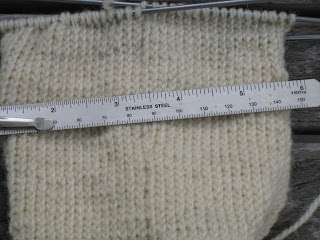I use the term "craftsmen" and "craftsman" as gender neutral nouns denoting a person that has spent years learning and perfecting their craft, and who practice their craft in an ongoing professional basis.
Professionals have professional tools, both in quantity and quality. While many modern hand spinners have "flocks" of spinning wheels, how many of them have the drying reels, skeiners, steamers, and space to produce a commercial order?
If a person is highly trained as a spinner then the most valuable use of their time is as a spinner, and putting time into cooking and child care produces less value. On the other hand if a person is highly trained as a cook and childcare specialist, then spinning is a lower valued use of their time, and the quality of their spinning is that of general labor, rather than that of a highly trained professional spinner.
Thus, a married couple seeking to support the family with spinning can optimize their economics by having one partner trained in spinning and pursuing a profession of spinning, and one partner trained in running a household, cooking, and rearing the children. This has likely been true since India was exporting fine cotton cloth to the Egyptian Old Kingdom, some 5,000 years ago.
In a time without birth control, the occasional woman might forgo sex (to avoid pregnancy) to become a master craftsman. However, the great textile centers of Europe were among the most densely populated places on Earth over a period of many generations, so we can deduce that the primary work force was not celibate. And, from the quality of their work, we can deduce that they did not take substantial time off for child bearing.
Thus, pure economic analysis without a hint of sexism tells us that the textile craftsman class was dominated by men. From this we can extrapolate to other crafts, including hunting and farming. The economics of division of labor and specialization has likely been at work long enough to have affected genetic sexual traits. Men and women likely carry genetic traits that suit the sexes to traditional economic roles.
Professionals have professional tools, both in quantity and quality. While many modern hand spinners have "flocks" of spinning wheels, how many of them have the drying reels, skeiners, steamers, and space to produce a commercial order?
If a person is highly trained as a spinner then the most valuable use of their time is as a spinner, and putting time into cooking and child care produces less value. On the other hand if a person is highly trained as a cook and childcare specialist, then spinning is a lower valued use of their time, and the quality of their spinning is that of general labor, rather than that of a highly trained professional spinner.
Thus, a married couple seeking to support the family with spinning can optimize their economics by having one partner trained in spinning and pursuing a profession of spinning, and one partner trained in running a household, cooking, and rearing the children. This has likely been true since India was exporting fine cotton cloth to the Egyptian Old Kingdom, some 5,000 years ago.
In a time without birth control, the occasional woman might forgo sex (to avoid pregnancy) to become a master craftsman. However, the great textile centers of Europe were among the most densely populated places on Earth over a period of many generations, so we can deduce that the primary work force was not celibate. And, from the quality of their work, we can deduce that they did not take substantial time off for child bearing.
Thus, pure economic analysis without a hint of sexism tells us that the textile craftsman class was dominated by men. From this we can extrapolate to other crafts, including hunting and farming. The economics of division of labor and specialization has likely been at work long enough to have affected genetic sexual traits. Men and women likely carry genetic traits that suit the sexes to traditional economic roles.
Thus, we have proven that women likely have genetically enabled traits that facilitate running a household, and therefore they belong in the House; and, by extension the Senate, Parliament, Bundestag, State Council, Grand National Assembly, . . . . .
Men have traits that make them good hunters and warriors. In the past, we have associated kingship with being a good warrior. We associated presidential capacity with George Washington's personal strength and stamina in winning of the Revolutionary War. However, modern wars involve weapons of mass destruction and cyber warfare, and these are wars that must be avoided. Leading a government no longer requires physically leading an army into battle. On the other hand, things like global warming are very much a threat to our security. Today, leading a government is more about planning and organizing cooperation - traits that women have. Traits that women have demonstrated by running households for thousands of years.
Elizabeth R did more for England than most of England's kings. Margaret Thatcher was certainly among the best of a long line of English Prime ministers. Golda Meir did better than most of most of the men that have held the post. Angela Merkel has done well for Germany.
I was born in Cheyenne, and grew up on stories of Governor Ross. From this, I believe that our selection process for national leaders discriminates against the traits that make good leaders in the modern age. We give too much credit to self promotion and aggressive behavior. That is, we should NOT choose the person who WINS the debates, but the person that can bring the group to a reasonable consensus. We should not choose the person that solves problems, but rather the person that prevents problems. That would be someone like the Mom that told you to do your homework.












.jpg)